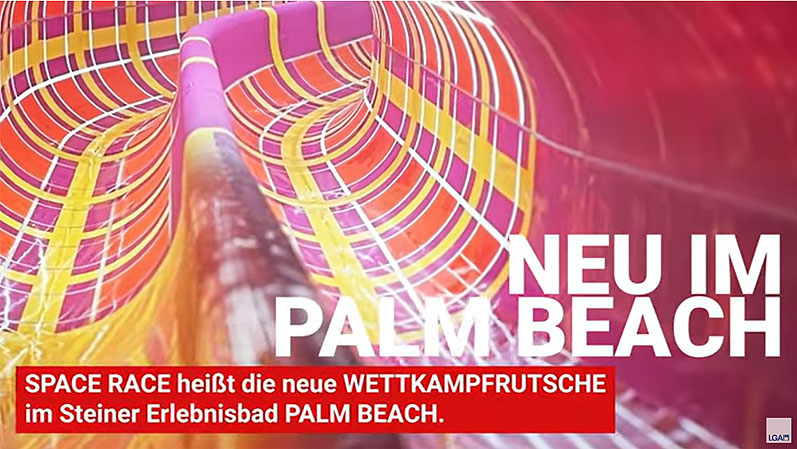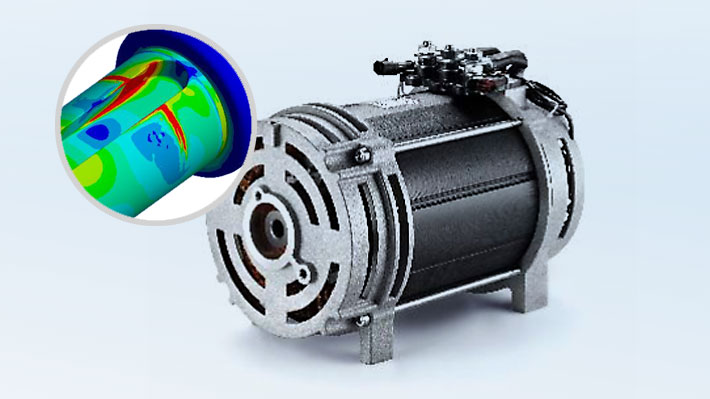Building code inspection of an adventure pool waterslide with Ansys
Full speed ahead into the curve
“Awesome!”. 13-year-old Jonas has not only just won the wild race against his buddy Finn, but also set the day’s record. We are at the “Palm Beach” water park in Stein, where the double waterslide “Space Race” has recently been inviting visitors to compete. The 120-meter-long curved plastic tubes are popular with swimmers of all ages and weights and are equipped to handle a wide variety of load scenarios. This is confirmed by the prescribed building code inspection, based on Ansys simulation results.
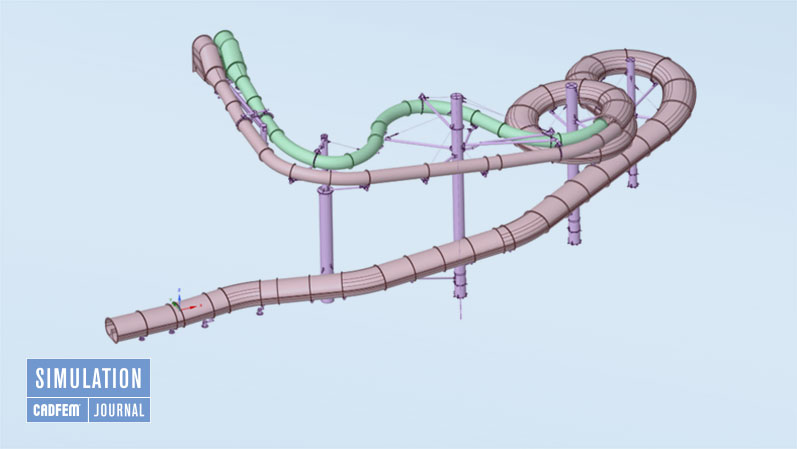
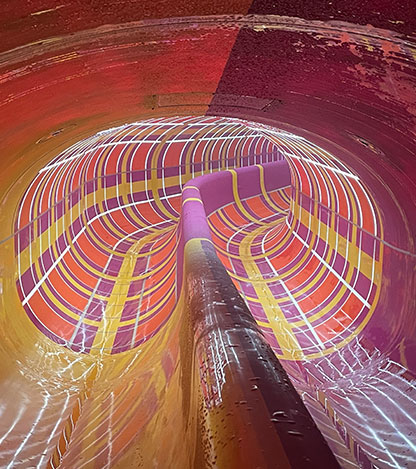
With a height of 12 meters and a length of 120 meters, the dimensions of the new competition slide at the adventure pool in Stein near Nuremberg are quite impressive. What you don't see at first sight, but for good reason is required by law, is that the attraction is safe. Long before the first swimmer slid at full speed through the winding tubes into the cool water, the entire facility was subjected to extensive testing. Even during the development and construction phase, the LGA (Landesgewerbeanstalt Bayern) testing office for stability in Nuremberg addressed all stability issues of the attraction in detail. Due to the high proportion of plastics used in the construction of the waterslide, Dr.-Ing. Ingo Kurzhöfer, a proven expert and specialist in plastic structures, together with his working group, also took on this task.
Checking the ultimate load conditions
In accordance with the Bavarian technical building regulations (BayTB), existing verifications of usability (approvals) and our own empirical values, complex comparative calculations were carried out and the construction of the complex slide system with its various construction elements was randomly monitored. Two separate plastic tubes lead steeply downhill at the beginning and are merged into a common slide cross-section in the lower area. The tubes are made of glass-fiber-reinforced plastic (GRP), with steel pylons serving as supports. Dr. Kurzhöfer explains: “Our task was, among other things, to check the ultimate load conditions and serviceability of this structure in accordance with the relevant standards and regulations. In addition to dead loads, wind and snow loads, of course, the effects of people sliding down also had to be taken into account. We were able to ensure this by combining simulation, material testing and monitoring during the construction phase. The load-bearing capacity of the assumptions made will also be monitored by independent third parties during operation in the future.”
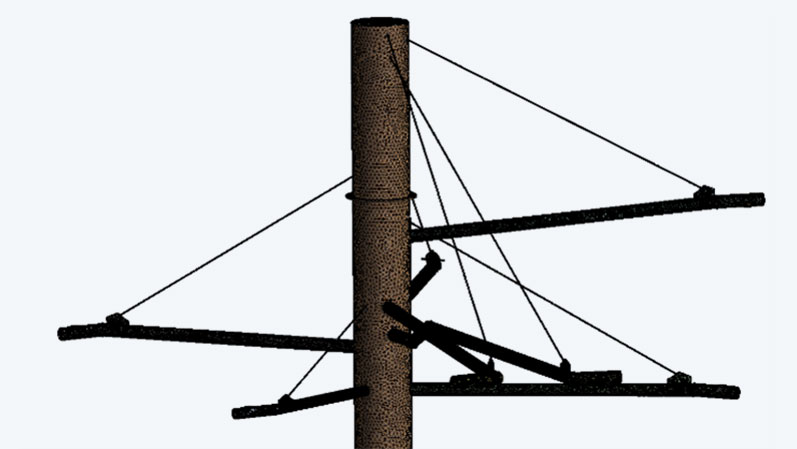
The waterslide planners made efforts early on to find an approved inspector who was well versed in both plastics and simulation. An additional advantage during the inspection of the slide system was that everything came from a single source, both on the planning side and with the inspector. This meant that any questions that arose could be clarified quickly and clearly without having to spend time searching for responsible contacts for the various elements, such as foundations, pylons and slide elements, in order to sort out the details.
Simulation is an easy way to set up and try things out
“As testers, we have to consider many different loads on the pylon, especially when the two slide tubes are each fixed to the pylons at both the top and bottom,” Dr. Kurzhöfer reports. “The load positions are based on who is sliding where at any given time, what centrifugal forces result from the sliders, and what happens if a jam occurs in one or both of the slide tubes. Additionally, the dead weight as well as water, wind and snow loads must always be taken into account. With simulation, you can easily set up this scenario and try out the various load cases, for example, where dents could form. You can also see what happens if something is modified here or there on the pylon or tube suspensions.”
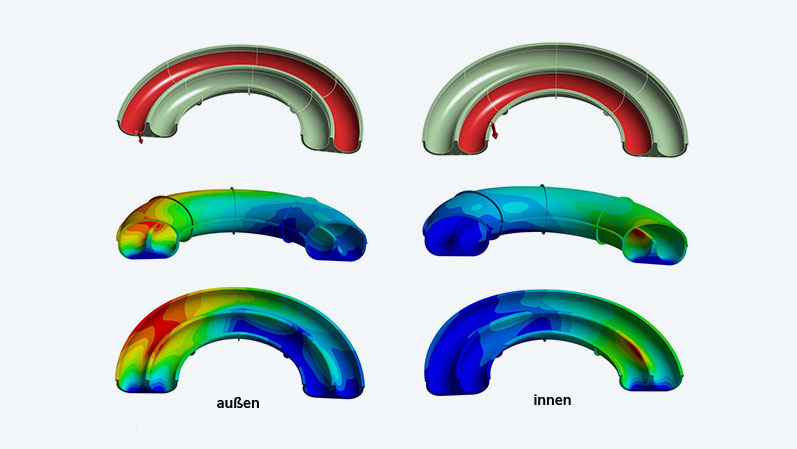
An experienced structural inspector is sure that without simulation, such an inspection is hardly feasible. In order to stay within the time frame, the responsible persons would probably choose oversizing after a few rough estimations, so that they are always on the safe side. However, that would mean more material, which would result in higher costs. Testing by means of experimental engineering would also be far too costly for the dimensions of such a double slide. The waterslide planners recognized the benefit of the simulation and have used it for the design and optimization of the slide system as well as for avoiding over-dimensioning.
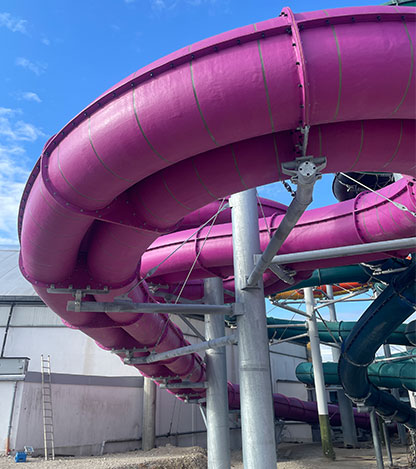
Without simulation solutions, the task would hardly be feasible
“Our serviceability testing is concerned with deformation criteria, for example, that there should be no slope when sliding down,” explains Dr. Kurzhöfer. “We also check which cables of the tube suspension are loaded and how and where the strongest loads occur, or whether stress peaks have to be absorbed by structural modifications. Likewise, temperature dependencies and strain must always be kept in mind, as well as aging processes. These complex analyses require a great deal of empirical knowledge and are hardly feasible today without simulation solutions, at least not within the specified time periods.”
The inspection of the water slide took almost half a year, starting in September 2021 with the foundations for the steel pylons and the entire construction supervision. By February 2022, the slide facility was completed and then soon put into operation. The younger bathers, who can now enjoy the water fun in competition, were particularly pleased about the new attraction. The adventure water park company, which had suffered greatly from Corona closures in previous years, was also delighted with every guest who was thrilled by the competition slide from spring 2022 onwards.
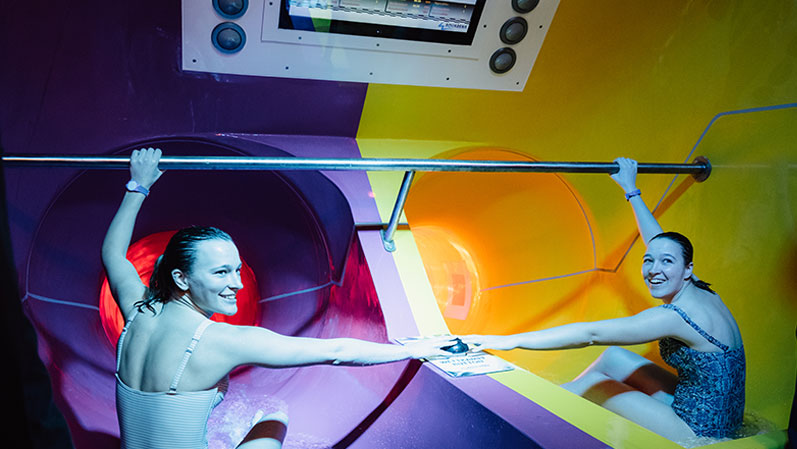

LGA - Prüfamt für Standsicherheit Nürnberg
Dr.-Ing. Ingo Kurzhöfer
Sachverständiger für Kunststofftragwerke
Ingo.Kurzhoefer@lga.de
Author: Gerhard Friederici (CADFEM Germany)
Image: © LGA Nürnberg,
Ingo Kurzhöfer, Markus Weise
Published: April, 2023
Contact CADFEM



